|
The portrait by Lucas Cranach, painted in 1526, of Katharina Luther, wife of the famous Martin Luther, depicts a woman wearing a hairnet. It was Dagmar Drinkler of the Bavarian National Museum who showed me this image some years ago. It is her opinion that Mrs. Martin Luther is wearing a sprang bonnet. I interpret this as possibly an interlinking structure, what I call a doubles grid.
Arriving at the centre, I chained across to secure the cloth. I chained threads one at a time. Then I blocked it. I got it soaking wet, and then selected the right sized mixing bowl from my kitchen. Mrs Luther's bonnet seems to have a band around the rim. I made a band using my tape loom. I measured out threads of sufficient length to make a band that will go around my head three times, plus a bit extra to tie a knot.
I made this first bonnet using a pale wool, hoping you would be better able to see the details of construction. Mrs Luther is wearing a dark colored bonnet. You will also note that the band around the head is rather wide, far wider than the band I made for this pale-coloured bonnet. I worked a band in a 2-2 interlace stitch, with vertical ribs, and a 4 contrasting colored threads. OK, the red yarn I selected is rather close in color value to the dark green, and the green design does not stand out well on my band. I was also disappointed to note that the design in my band is far more elongated that the design in Mrs. Luther's bonnet. OK. Maybe I should stick to my field of expertise, the sprang, and leave the band to someone else. Perhaps it is another technique, perhaps an embroidered design.
0 Comments
My take on this is that the fashion of the day was for a person to wear a large, wide-brimmed hat. The hat needed to sit on the side of the head. To secure the hat to the side of the head, keep it from falling off, a hairnet is worn. The large-brimmed hat can be secured to the hairnet with a pin ... that's my understanding. I have worked through a number of sprang hats, trying to replicate what I see. You will see the scheme for my version of hat in the drawings below. 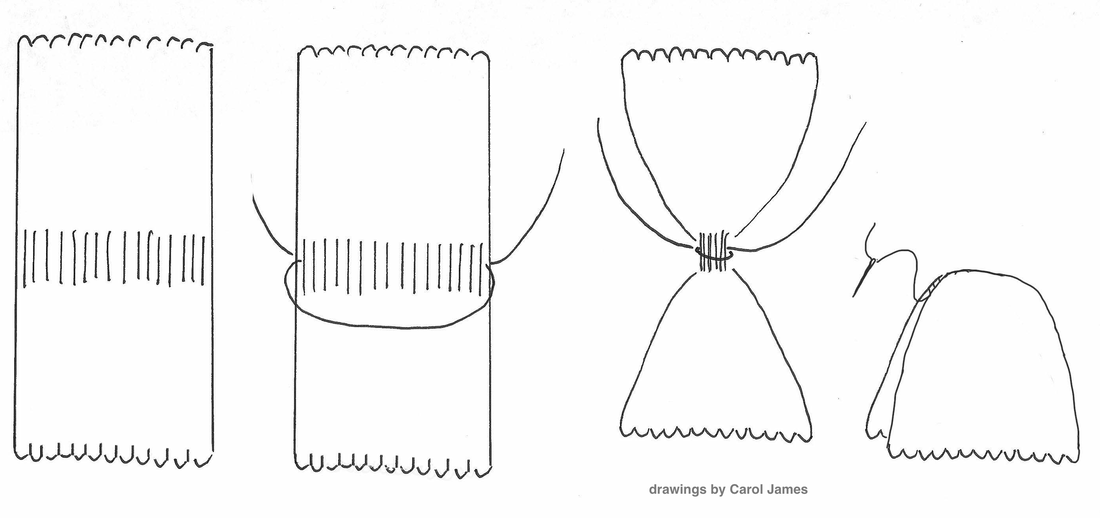 I began with a warp of sufficient length to produce a cloth that will cover the head, from forehead to the nape of the neck. The cloth must be wide enough to go half-way around the head. I worked until the two pieces of cloth met at the middle. I secured the middle with a piece of string, the same string as used for the warp. I tied a knot, and used the tails of the knot to sew up the cap. The knot sits at the top of the head (sort of) and the loops from the top and the bottom of the warp go around the rim of the bonnet. In the drawing A marks the loops that were at the top of the frame, B marks the loops from the bottom of the frame. I made sure that the loops at the bottom of the frame were loose ... you might put a stick in those loops, to keep them large and loose. C marks the centre of the cloth which comes to be located at the top of the cap. D is the band which I attached along A, the loops at the top of the frame, now the front of the cap. The ends of band D pass through those loose loops from the bottom of the frame. One end of D passes in at F and comes out as H. The other entered the loose loops at E and comes out as G. In this manner the bonnet sits, nicely spread out across the forehead, and can be cinched to fit the head. Those ends G and H can be brought around the head ... you need to make D long enough to go around the head 3 times ... and then you can tie G and H at the back of the head. One more set of things to ponder, the colored stripes in the hat. There are a couple of ways to get vertical stripes in your sprang work. For bonnet A in the image above, I used single loops of a contrasting color of thread ... that 2 threads. A single loop of the contrasting color will give you a broken line. A pair of loops (4 threads) of a contrasting color will give you a solid line with a jog. For bonnet B, I made cords of a contrasting color, and stitched them to the side of the bonnet. Actually I twisted a pair of contrasting colored threads, and then I folded the thread in half, and allowed the twisted thread halves to un-twist around each other. Where I folded the thread, that's what was attached the cord at the brim. The cut ends of the cord make for a tuft at the top of the head. Now, I don't see the tuft in the portraits ... but then again the top of the bonnet is hidden inside that large brimmed hat. I do like the idea of the thicker thread worked into the bonnet to create the stripes. This assumes that there is a reason for the stripes. The stripes being thicker would give a hat pin more bonnet to which to grip and to attach. I then thought of the idea behind bonnet C. Bonnet C features what I call vertical twining. The contrasting color threads in bonnet C always pair with same-coloured threads. There is no jog in the line. When working with vertical twining, the structure works nicely with the twined thread being thicker than the background colored threads ... perfect for this bonnet. I teach a class on sprang twining on a background of interlinking ... and this vertical twining is one of the variations covered. |
Categories
All
Archives
May 2023
Categories
All
|
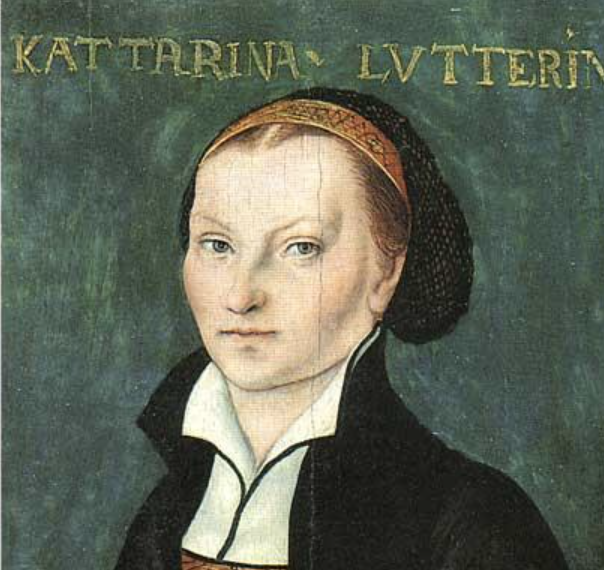
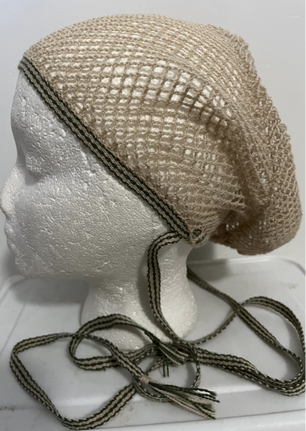
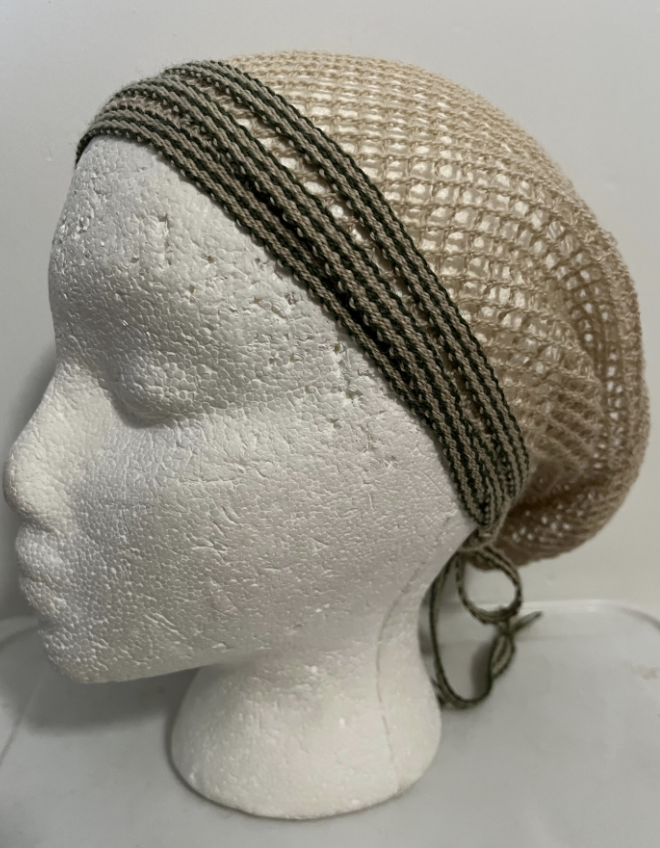
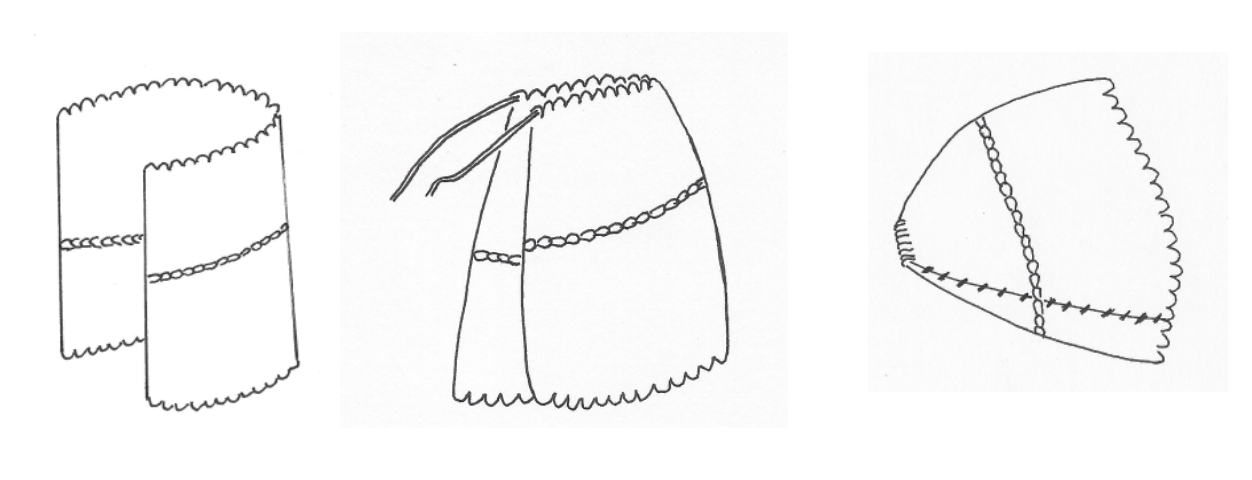
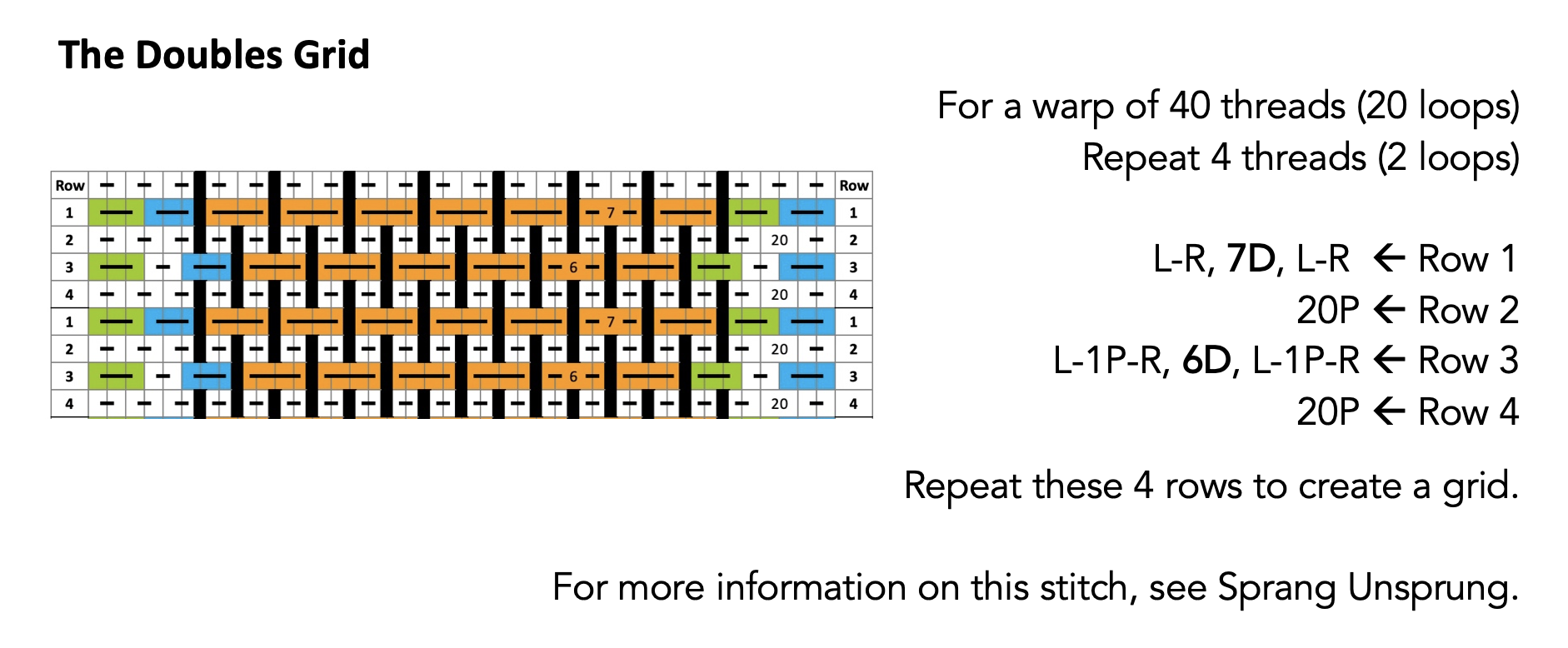
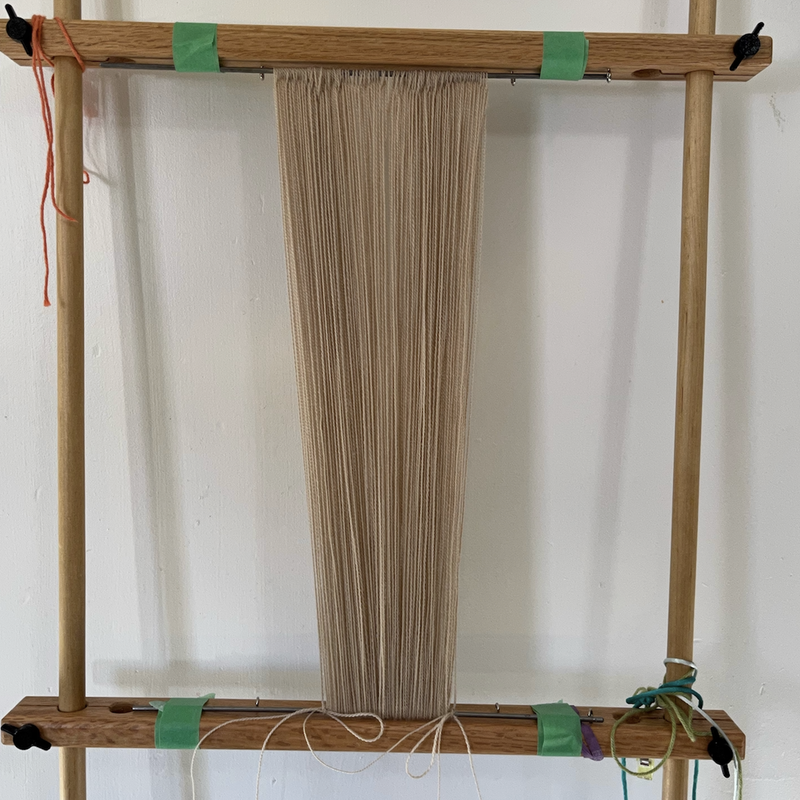
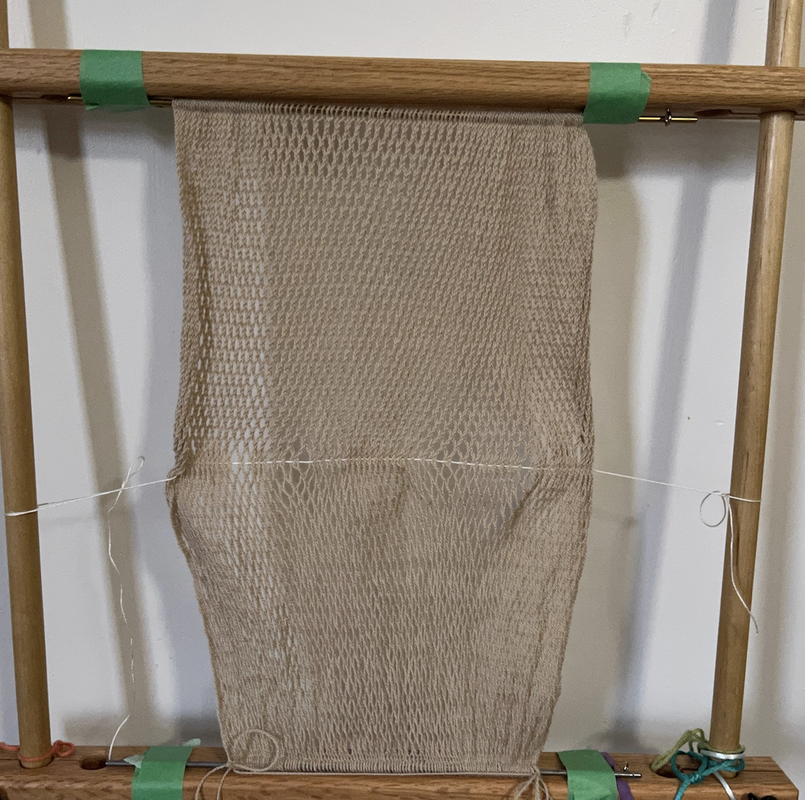
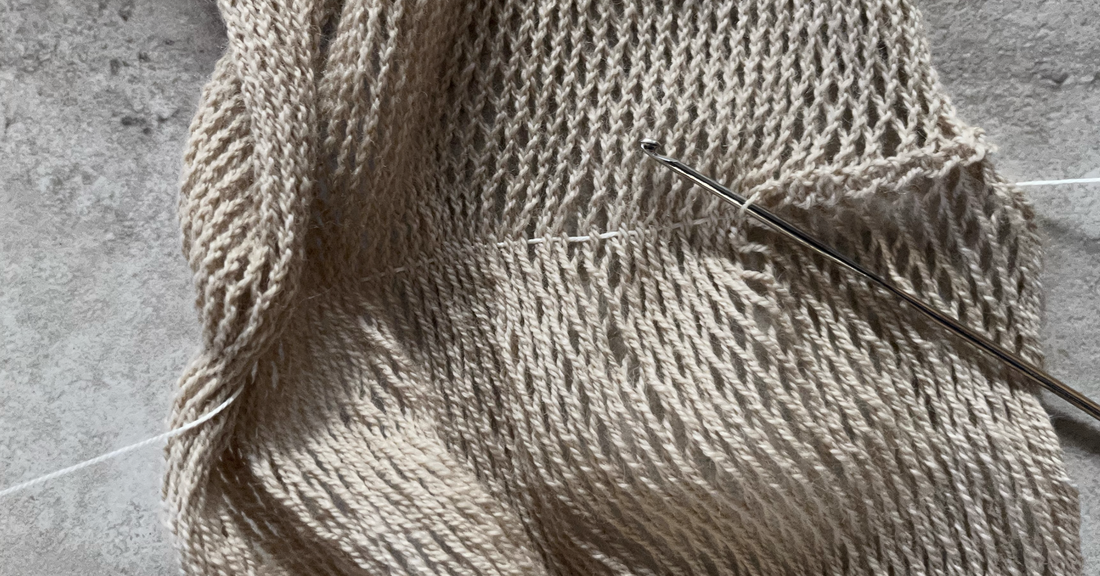
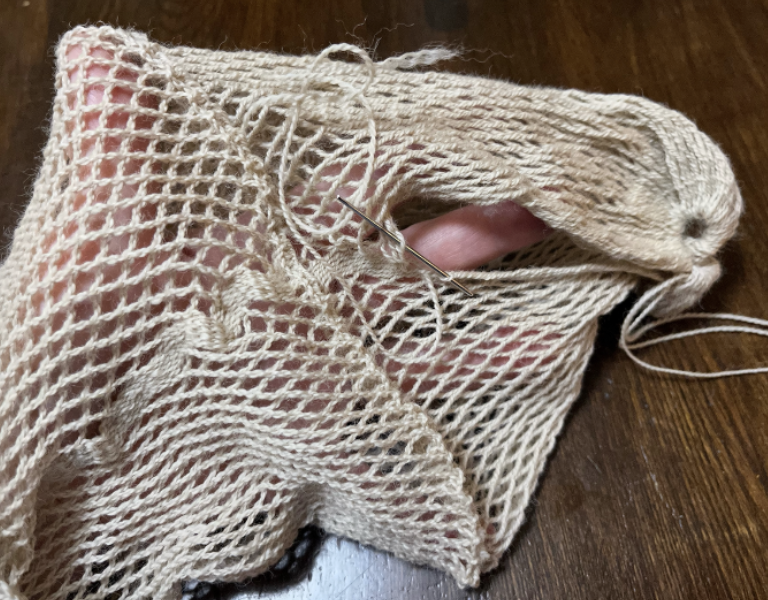
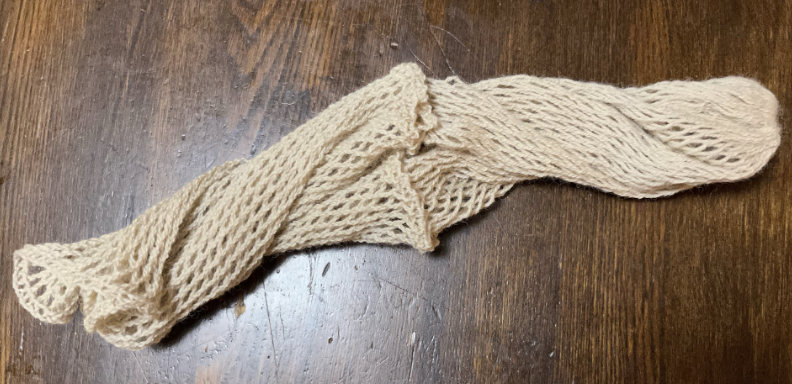
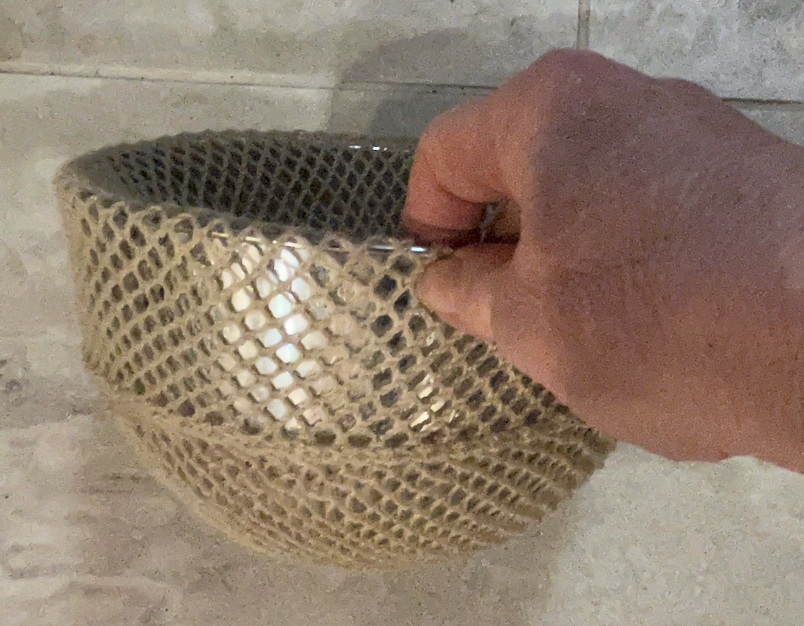
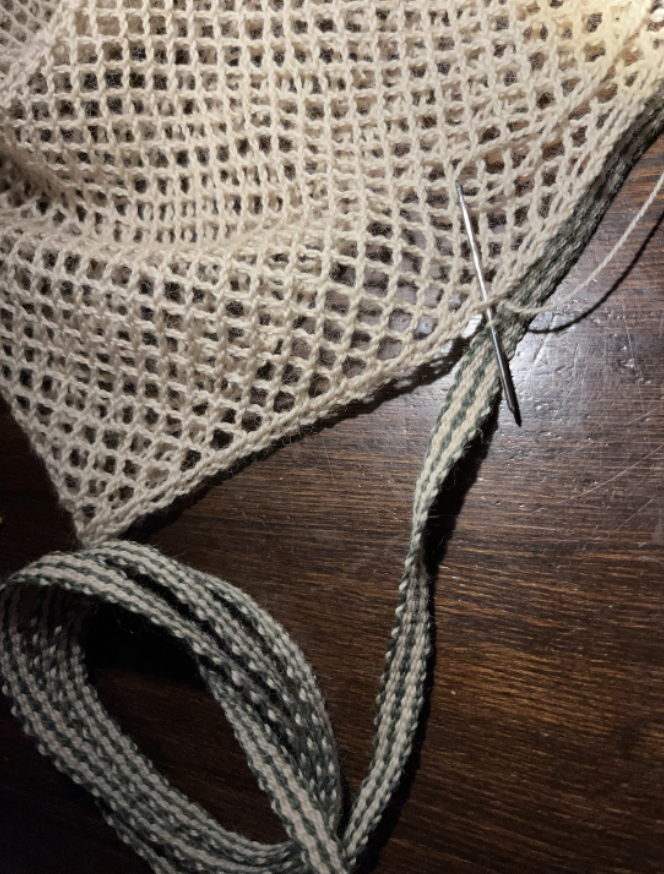
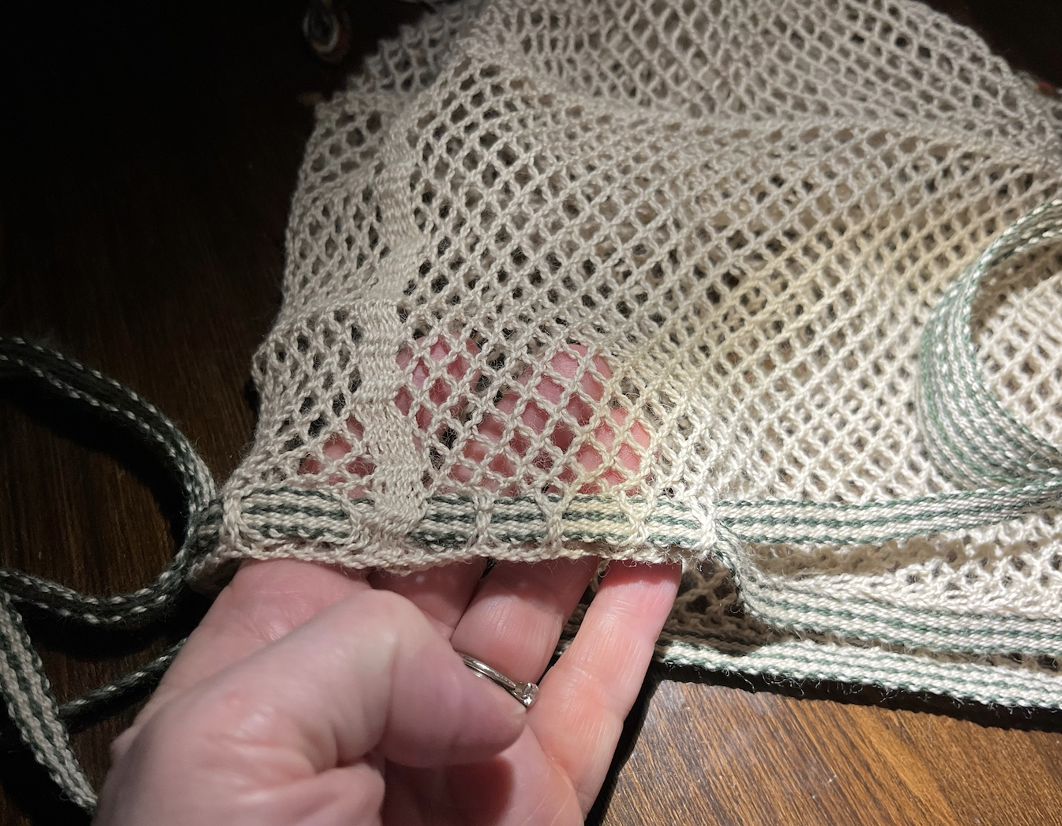
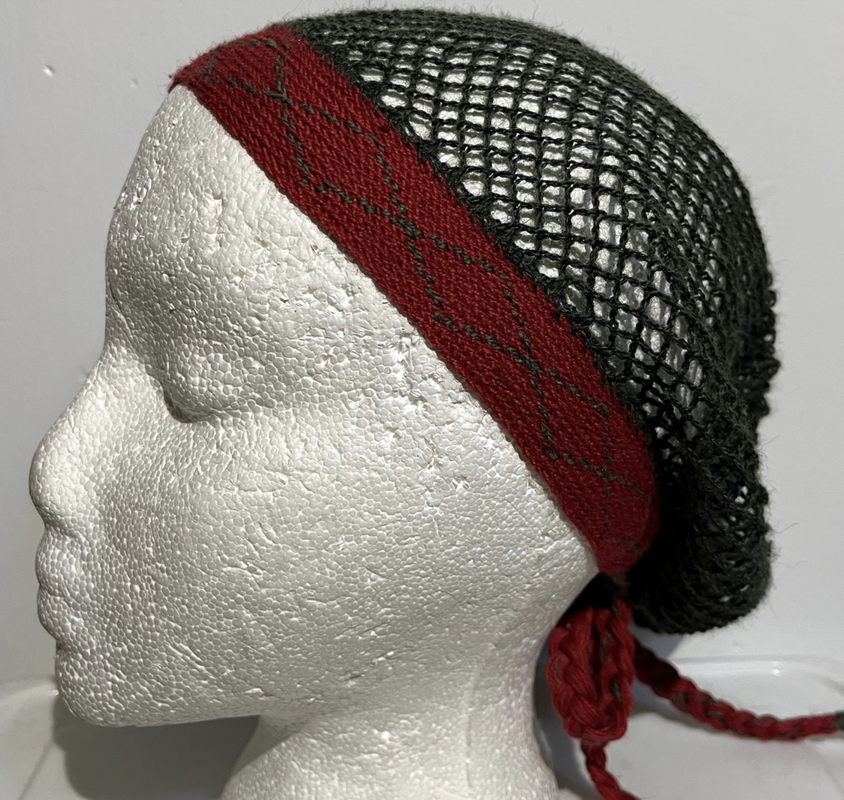
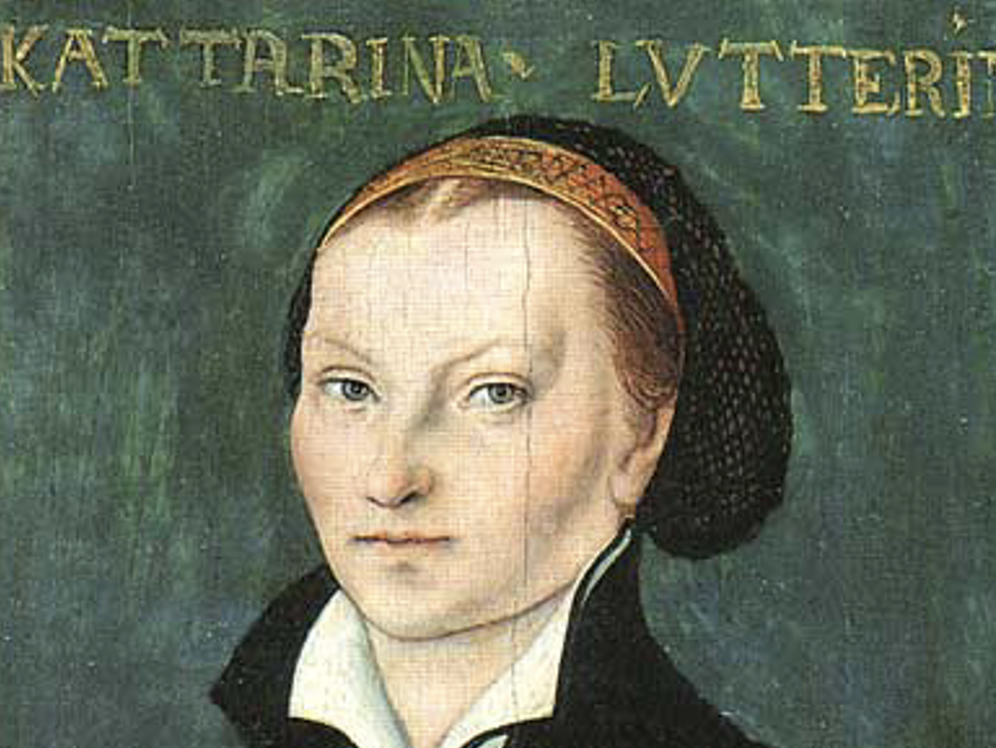
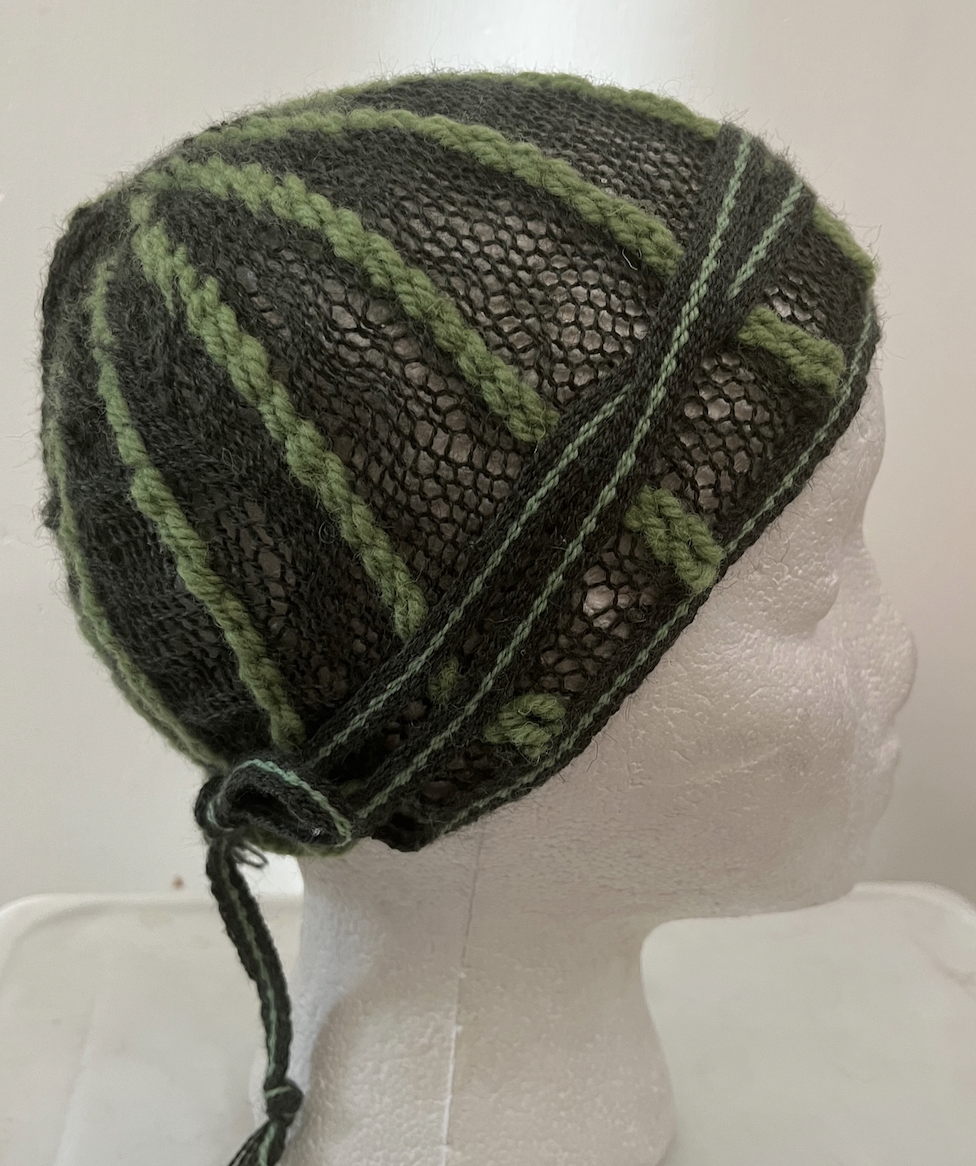
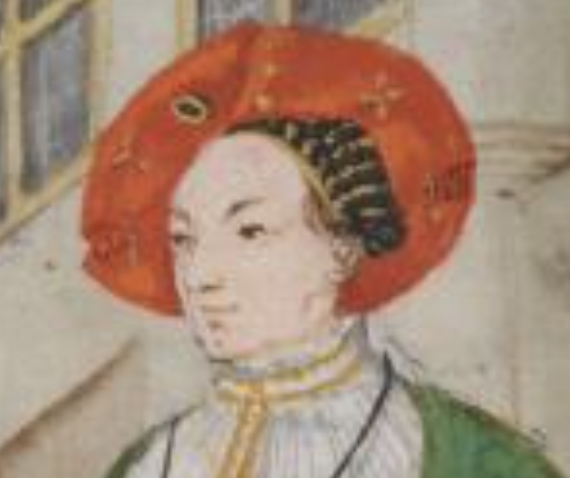
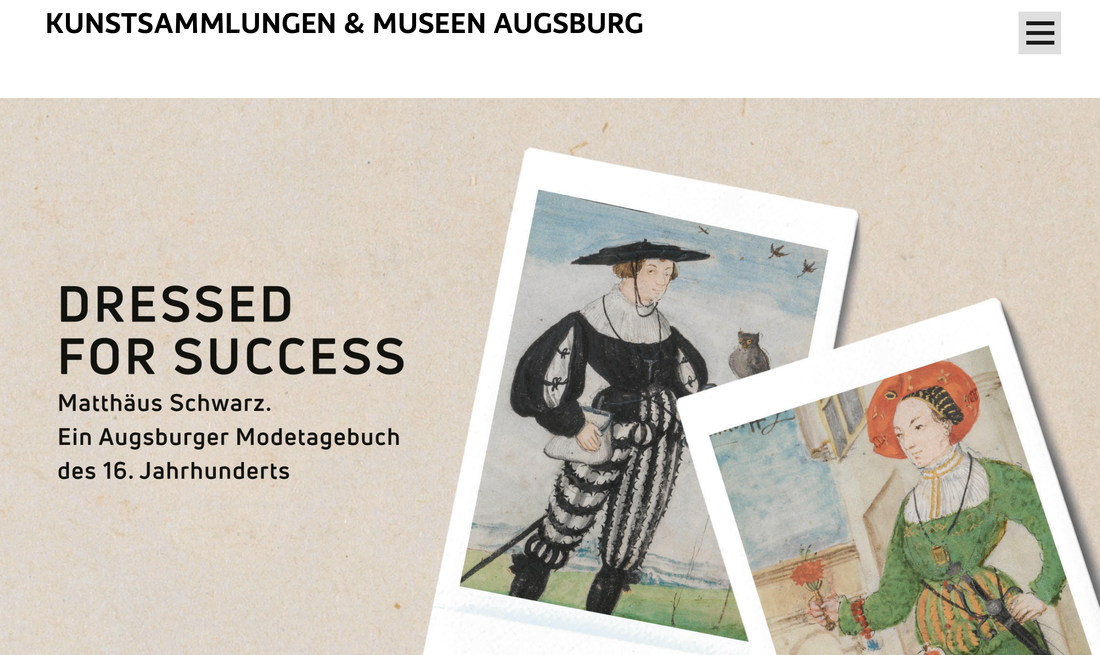
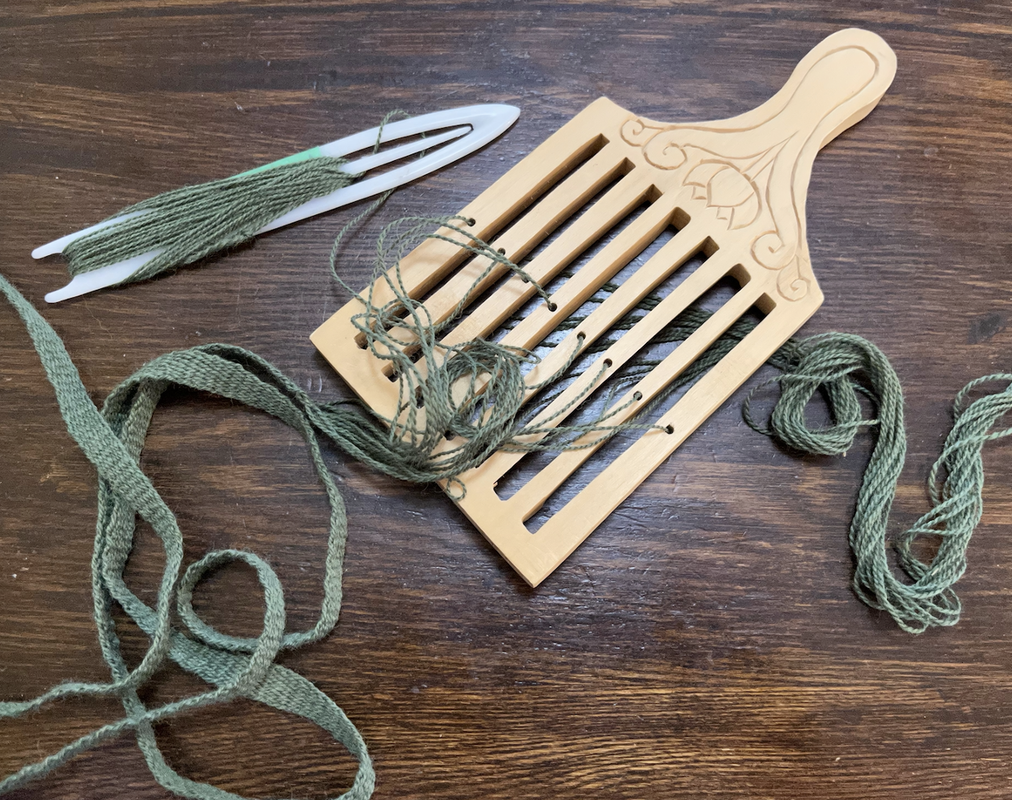
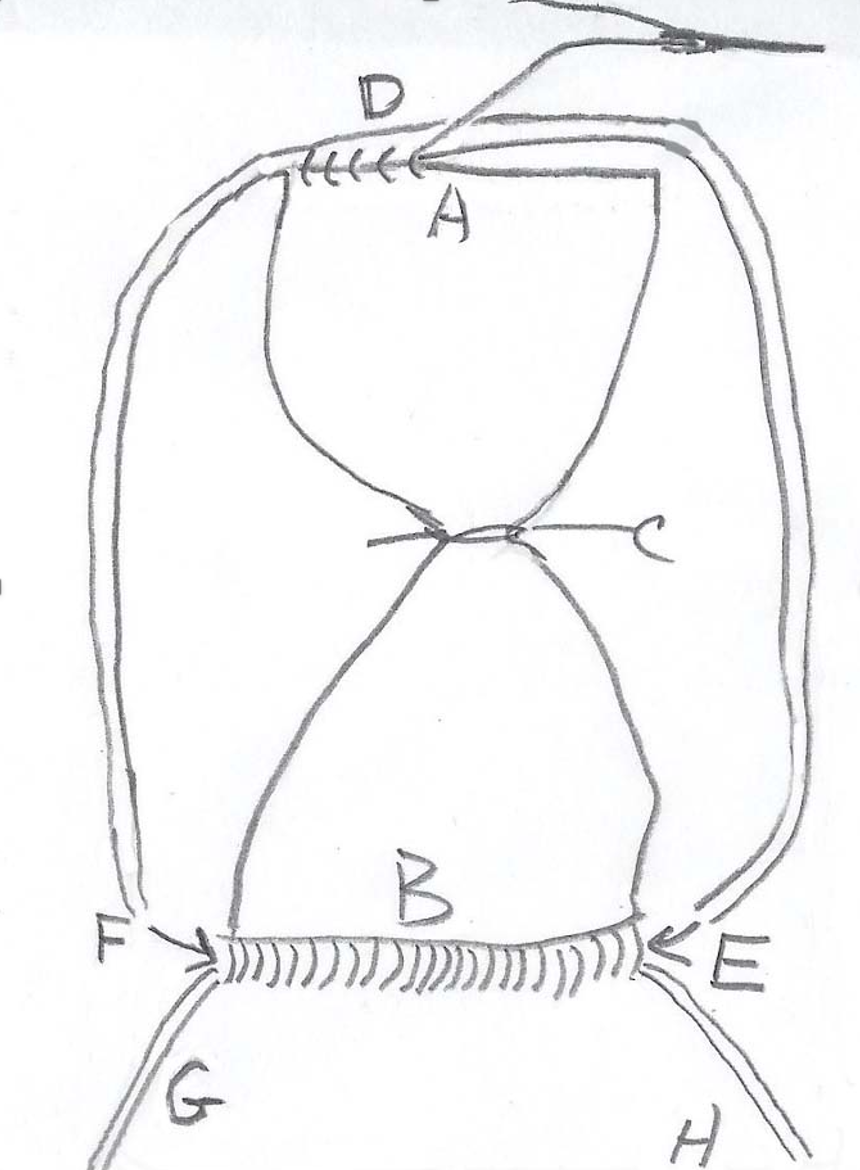
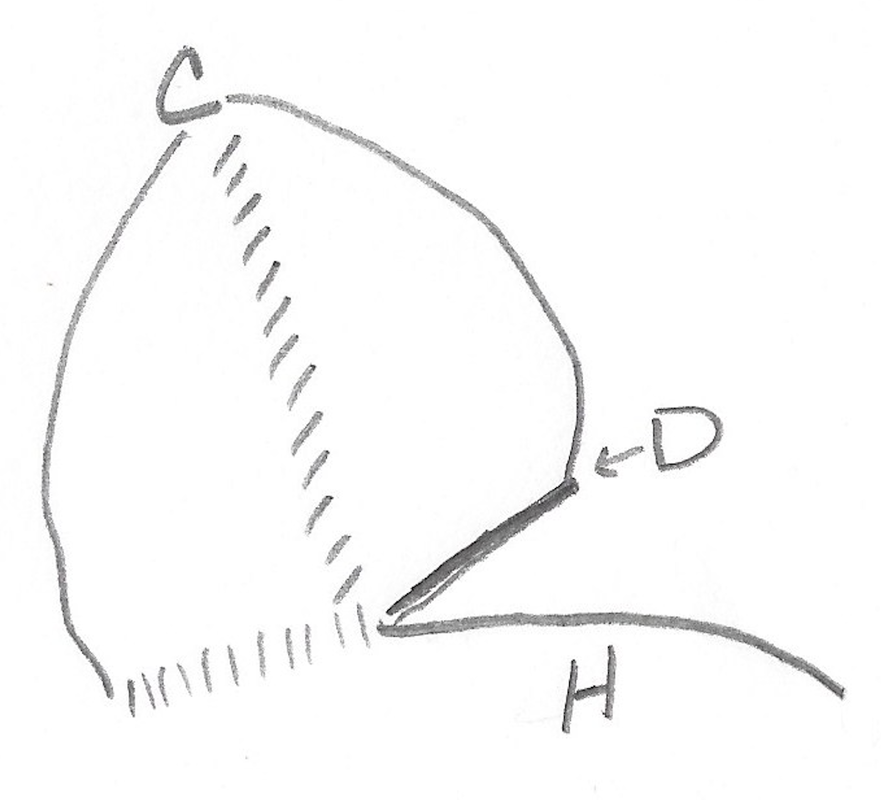
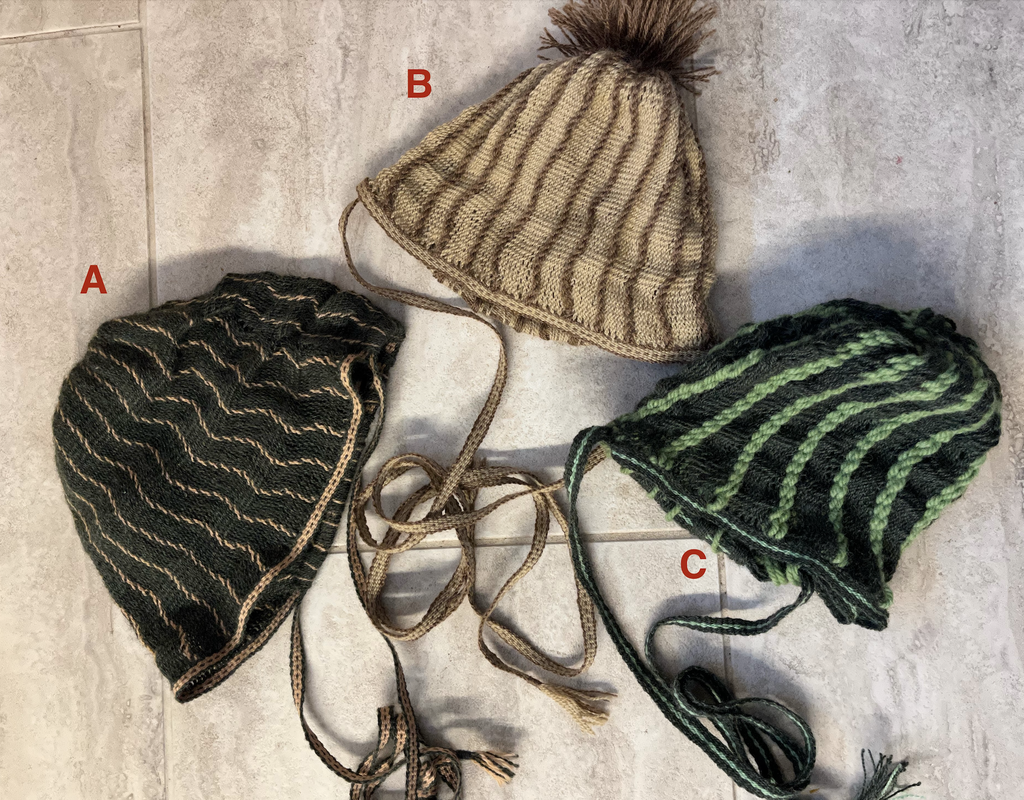
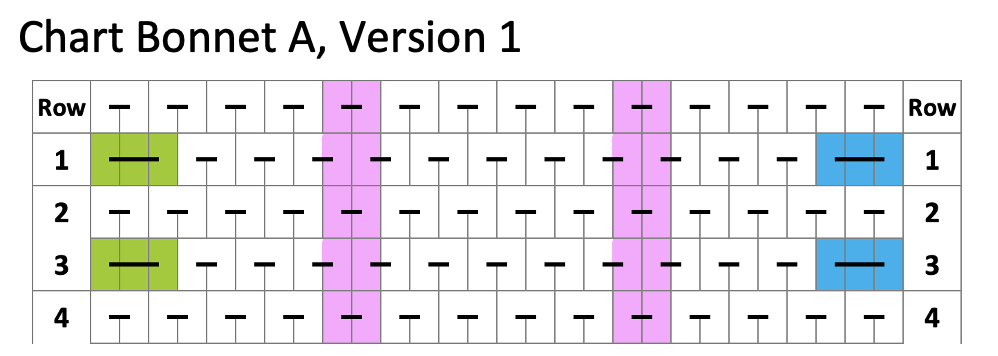
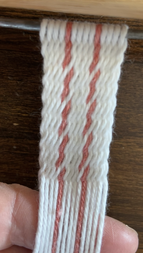

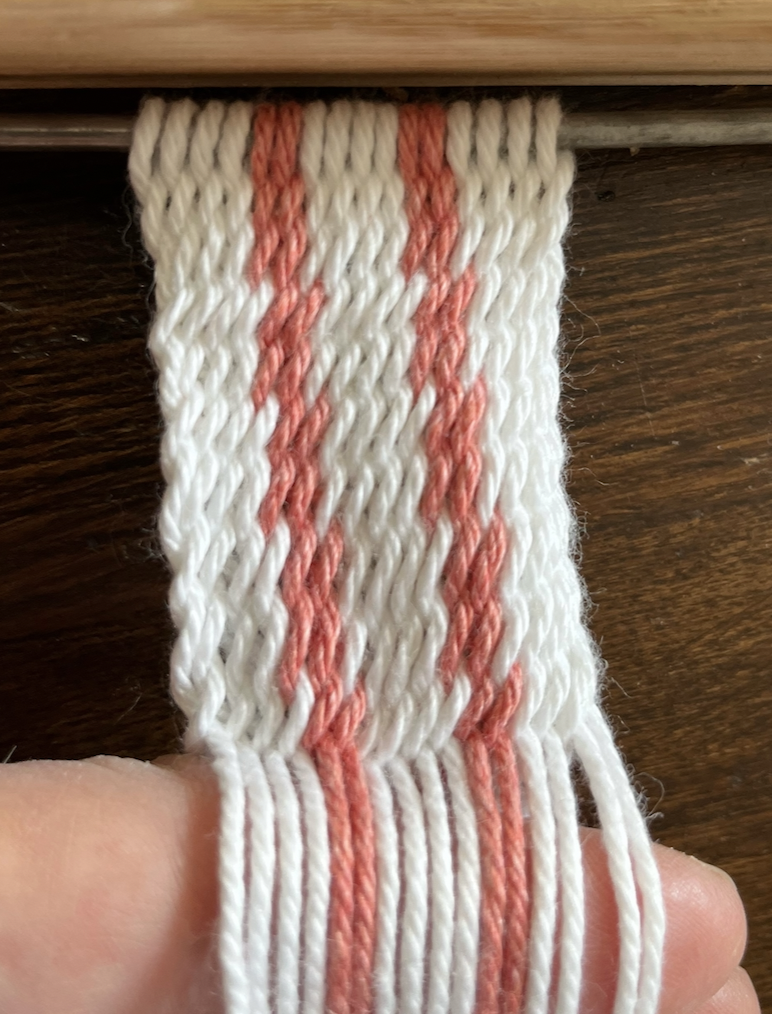
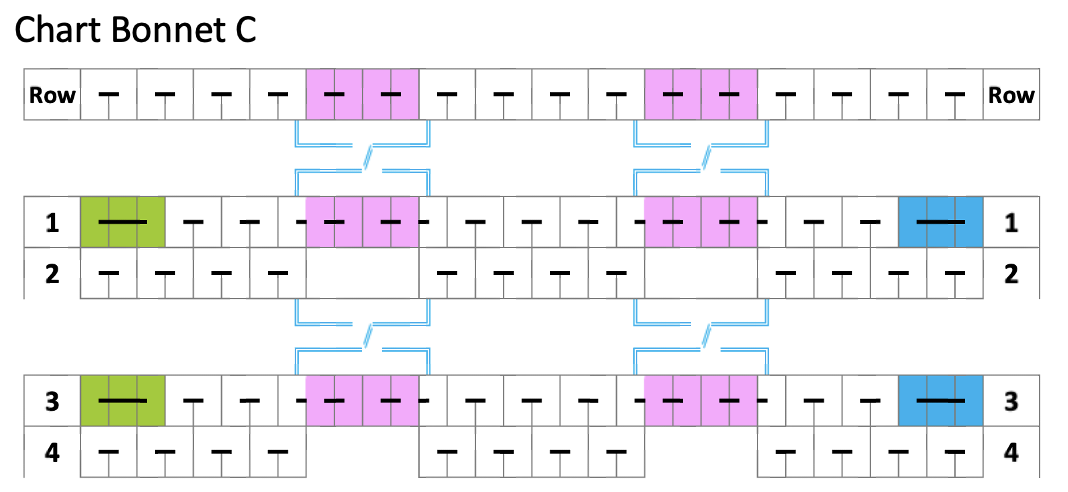
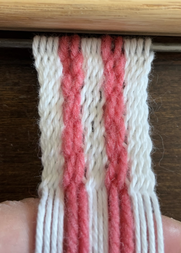
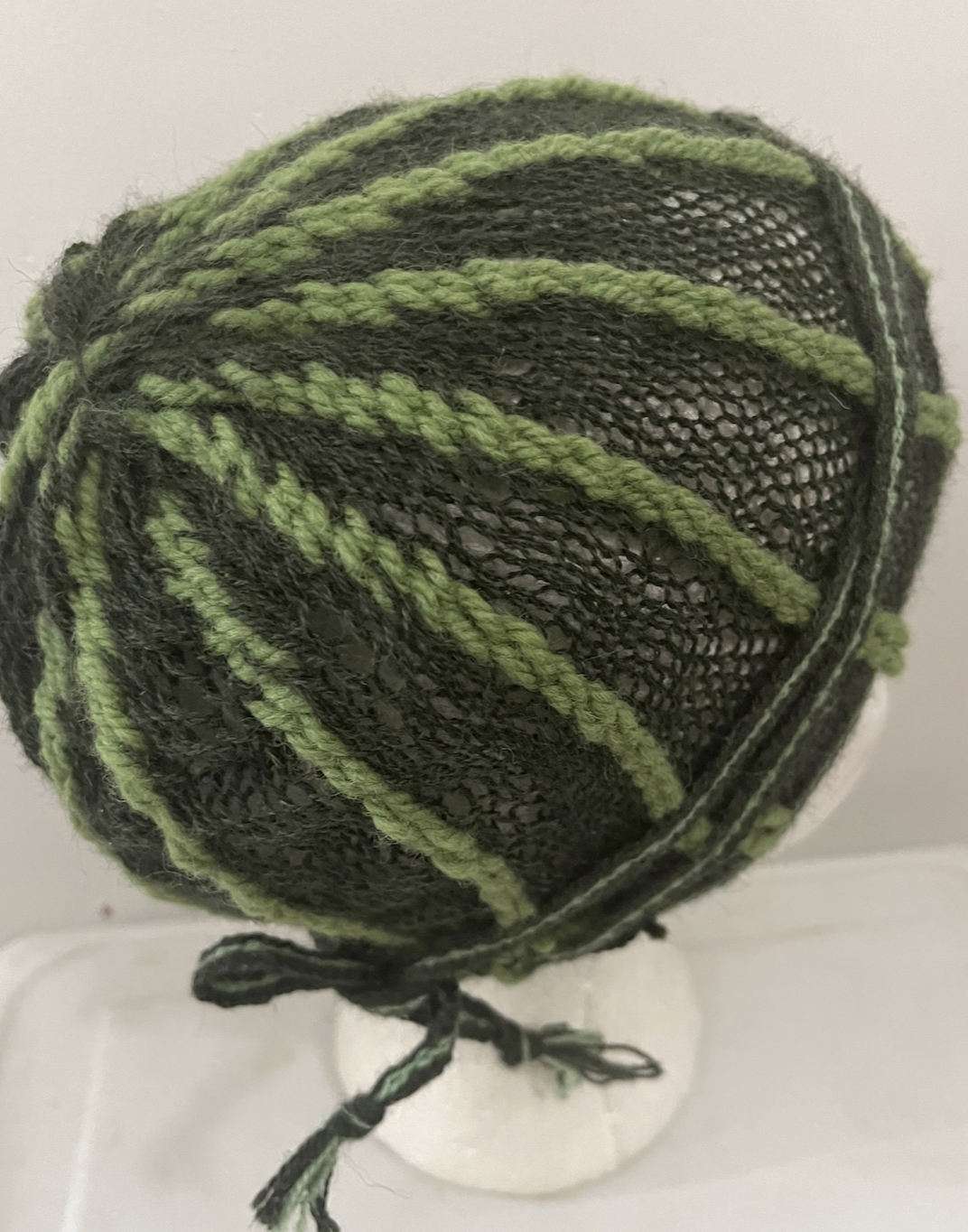
 RSS Feed
RSS Feed